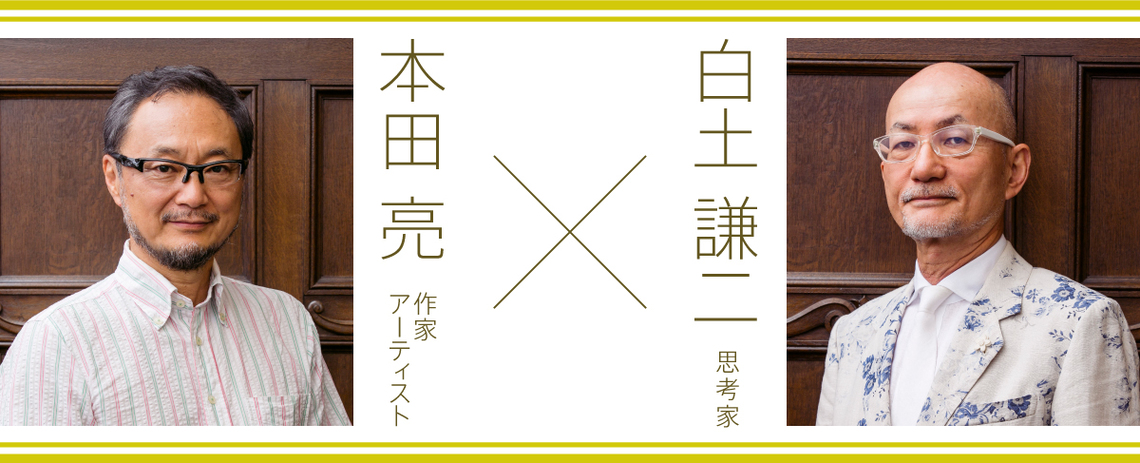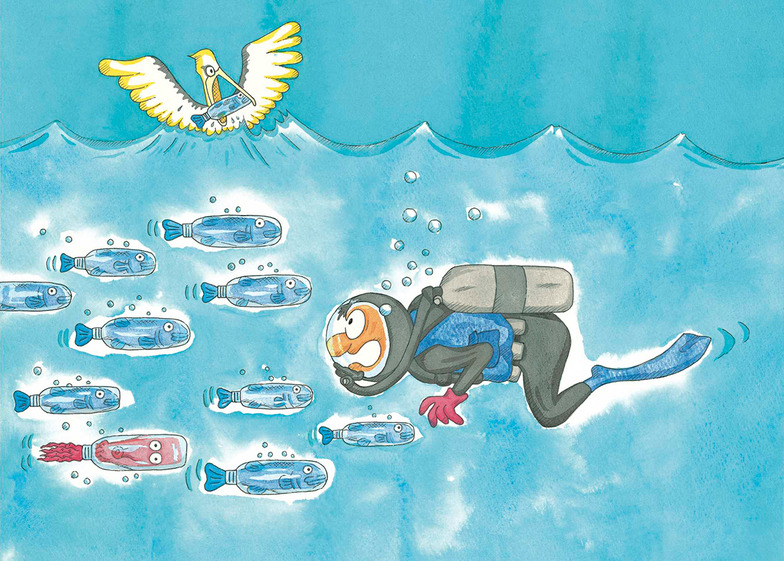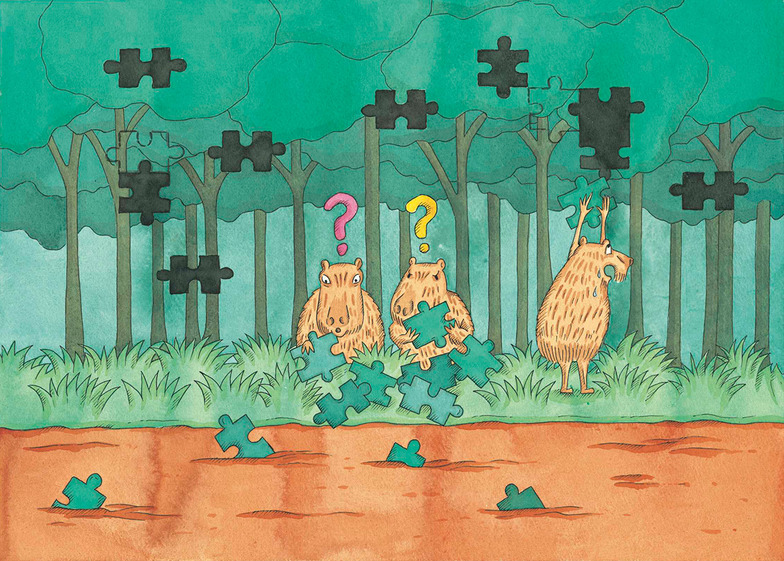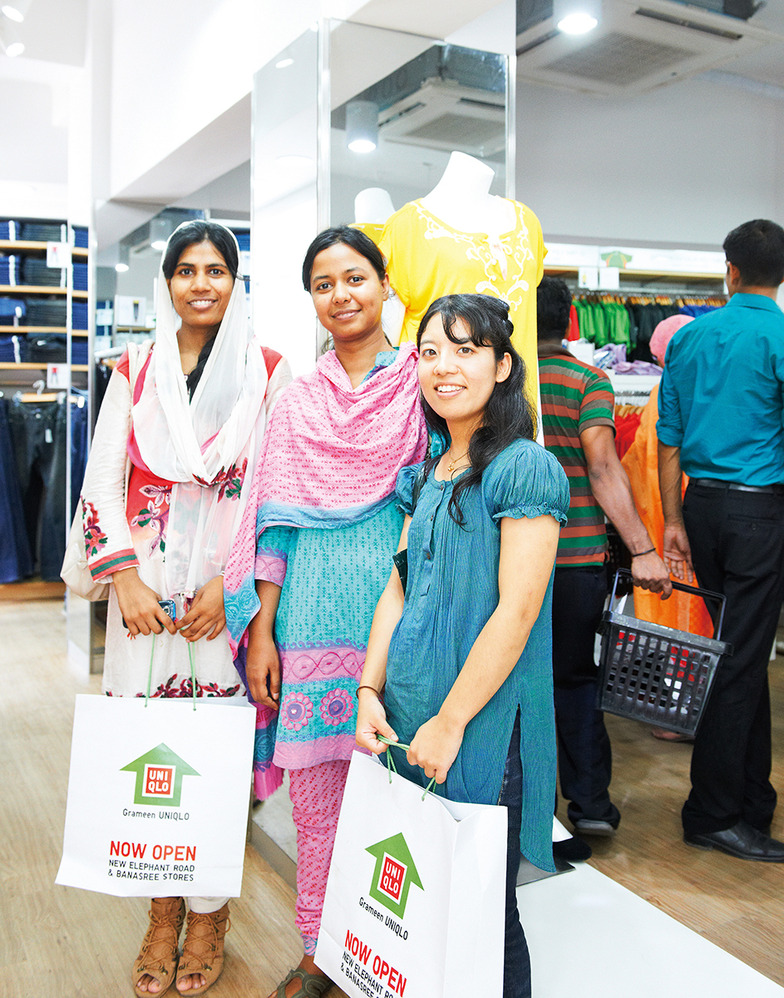What Companies and Advertising Can Do to Make the World Happier

ADVERTISING STUDIES

Ryo Honda

Kenji Shirotsuchi
Thinker, Former Executive Officer at Dentsu Inc.
Society today is overflowing with challenges that need solving. Traditionally, government and citizens were the main players tackling these issues. However, companies now also shoulder this role, with many pursuing social good initiatives. In this era demanding deeper engagement with social causes, how should companies act, and how can advertising support them? We asked two creators with proven track records in social activities to discuss the potential of social good initiatives and advertising.

From Philanthropy to Social Contribution as Business
──Social good activities are becoming more prominent in Japan, and corporate interest is growing.
Shirato: Corporate activities in the social sphere originated with donations, corporate patronage, and charitable activities. Subsequently, social issues like environmental problems emerged, making it difficult for companies to operate without addressing these concerns. This was essentially social good activity as risk management. Over the past decade, this has advanced further. If society has problems, companies are now moving to solve them as their core business. They're launching social good ventures as part of their management strategy, and individuals called social entrepreneurs are starting ventures. The trend is roughly the same globally and in Japan, though it seems the world was about 15 years ahead in this shift.
Honda: I share that view. Recent changes are particularly noteworthy. Previously, companies focused almost exclusively on pure CSR initiatives, but now the atmosphere has shifted to "Let's do good and profit openly." This is a change we cannot overlook.
The catalyst was undoubtedly the Great East Japan Earthquake on March 11th. I've been drawing the environmental manga "Eco-Nosaurus" for 26 years, but back then, very few people were actually engaged in concrete activities. After 3.11, however, a huge number of for GOOD messengers emerged. I was genuinely surprised to discover that Japanese people actually had such a high level of social contribution awareness.
Shirato: The groundwork for wanting to volunteer was likely already laid by the Great Hanshin-Awaji and Chuetsu earthquakes. But before, the main volunteers were professional groups—like Keidanren collecting supplies from companies and delivering them by truck, with transport companies assisting. With the development of the internet and social media, individuals and ordinary citizens now research and take pinpoint action themselves. The way people participate in volunteering has changed significantly from before, and perhaps that's why more people are sharing their "for GOOD" stories.


The History of Social Good Advertising
Shirato: In terms of communication specifically, public communication flourished in the US from the 1960s to the 1970s. While the Cannes Lions Festival is now primarily a creativity competition, it originally had both commercial and public service categories. Globally, it was considered standard that one wasn't truly established unless they won awards in both categories. Within the American advertising industry, each agency also has a history of focusing on public themes like regional revitalization and education. In that sense, social good initiatives have long been a natural part of the communications world.
Japan was influenced by this trend, producing numerous public service or socially conscious ads in the 1980s. One memorable example was Toyota's "Don't Turn Your Car into a Weapon" campaign. It might seem surprising today, but back then, manufacturers were directly delivering traffic safety messages. Researching a quarter-century of modern advertising history should reveal many more such examples.
Honda: Recently, there's been a trend showing that social contribution and profit can coexist. The first "for GOOD" ad I recognized in this direction was Volvic's "1L for 10L." For every liter of Volvic purchased, the company sends 10 liters of clean water to Africa. While there may have been for GOOD ads linked to corporate profits before, I'd never seen one so high-quality or vivid. It taught me, "You can contribute to society and achieve a win-win."
Shirato: My foundational experience with advertising in the social sphere was the Big Apple Campaign launched by the New York City Tourism Bureau in the 1970s. Back then, New York was far from a Big Apple—it was called a rotten apple and was considered the most dangerous city in the world. I visited often for location shoots. If you got off at the wrong subway stop, you'd get mugged and stripped of everything. Even staying in a hotel, you couldn't sleep with police cars and ambulances racing around all night.
Young advertising agency staff, alarmed by this situation, launched this campaign. They aggressively promoted the message: New York is a city full of fun things to do, so even if it's a little dangerous, get out there and have a good time! Broadway superstars even volunteered to appear in the commercials for free. As a result, New York's image changed, and tourists reportedly returned.
What I experienced and felt firsthand was that the Big Apple campaign was more of a movement than just a campaign. In Japan, we tend to think about using media to express things skillfully or using catchy phrases to move people, right? While that's certainly important, the Big Apple campaign had a dynamism that incorporated events and moved society through the entire mechanism. I remember being shocked, thinking, "Is this how you approach the public?"
Is this activity GOOD or BAD?
Honda: What concerns me about Japan's for GOOD advertising is the depth to which companies are willing to engage. Overseas, many explicitly aim to change opinions or politics. In Japan, however, there's an atmosphere where companies aren't supposed to have concrete opinions or take clear stances, so everyone treads water. That's regrettable.
Shirato: The White Band controversy is a symbolic incident that underscores this. The White Band project aimed to draw attention to African poverty. It wasn't a donation drive but an awareness campaign for advocacy (policy proposals). The goal was to build public awareness of African poverty to create pressure on the government. However, in Japan, people mistakenly believed the money from buying the bands was sent directly as aid to Africa, making it a target of criticism.
Actually, when the White Band project team visited Japan, I helped them by making a film and such. When they said they wanted to hold a concert, I told them, "We can gather 9,000 people." They were stunned, saying, "It's not worth talking about unless it's over 100,000 people" (laughs). In other words, they felt they needed to gather that large a number to have the clout to make policy proposals to the government. Moving the world through systems is exactly what this is about, yet in Japan, it's misunderstood and becomes a target for criticism. I felt sorry for everyone involved, including the celebrities who were cooperating.
Honda: Japanese people tend to scrutinize every detail, right? If there's even the slightest flaw, they pounce en masse. The White Band campaign was a perfect example. Witnessing this kind of bashing makes companies, even when doing something genuinely for GOOD, only say defensive things or only venture into safe, non-controversial areas to avoid backlash. I suspect most companies still treat "for GOOD" as little more than a superficial formality.
Shirato: Even so, I do feel things have changed over the past decade. Around 2003, CSR (Corporate Social Responsibility) became a boom, and over 3,000 companies in Japan published CSR reports. Curious about what they contained, I requested reports from about 50 companies. Every single one listed tree planting as their environmental initiative (laughs).
That was the initial level. But companies themselves eventually realized this was problematic and started thinking about solving issues based on their own values—meaning leveraging the potential of their core business. Still, change doesn't happen overnight. It's hard to put into words, but CSR managers are often—putting it nicely—good-natured and earnest people; put less kindly, they tend to be the safe, uncontroversial type. They're not ideally suited to approaching social good with fresh perspectives. To pursue social good as a business, you need a change in personnel. It took some time, but now, over a decade after the initial CSR boom, we're finally starting to see the results.
Honda: Mr. Shiroto, you were involved in Fast Retailing's CSR activities, weren't you? How are that company's social good initiatives?
Shirato: When Fast Retailing's "Social Contribution Office" became the CSR Department in 2005, I participated as an external committee member. The first initiative we tackled was environmental issues. We produce and sell a lot of clothing, but the problem is that it ultimately gets incinerated and becomes CO2. So, we decided to recycle it and deliver it to people in need. In reality, there are over 65 million refugees worldwide who lack adequate clothing. We partnered with UNHCR (the United Nations High Commissioner for Refugees) to distribute these items.
Up to this point, it was a fairly common CSR initiative. However, Fast Retailing didn't stop at just distributing. Executives and employees visited refugee camps around the world. They didn't just observe; they conducted research. They considered various factors, such as whether distributing clothes might disrupt local vendors selling clothing, and they conducted surveys.


Shirato: As a result, we learned that refugees also strongly desired independence, saying, "We're happy to receive clothes, but what we really want are sewing machines and fabric scraps. We want to earn our own livelihood." This led us to launch a new initiative. Specifically, we partnered with the Grameen Bank Group, which provides microfinance in Bangladesh, to establish Grameen UNIQLO. This company employs local people and is a clothing company for the local community. We evolved beyond typical environmental initiatives to commercialize social good.
Naturally, personnel changed during this process. Young students who might have previously said they wanted to work for the UN or an NGO now join the company and immediately push to join the CSR department. This is something unseen ten years ago.
Honda: Verifying things on the ground is crucial. I serve on the board of the UN World Food Programme (WFP), and cases like the one Mr. Shirotsuchi mentioned are happening in WFP-supported areas too. For example, when refugees from Somalia gather in Ethiopia and we provide food aid there, the refugees' standard of living sometimes becomes higher than that of the local Ethiopians, leading to resentment from the local population.
That's why we've recently started thoroughly investigating local conditions. We're not just providing food aid to refugees; we're also initiating projects like building irrigation facilities to help them become self-sufficient. When constructing irrigation facilities, we provide funds. Donors to the WFP might frown and say, "Don't just hand out money; provide aid in kind." But it's worth recognizing more widely that what seems appropriate from the outside isn't always appropriate from the local perspective, and vice versa.
Shirato: I agree. The Chinese philosopher said, "Evolution and degeneration advance together in history." Behind GOOD, there is always BAD. For example, the "1L for 10L" campaign Mr. Honda mentioned earlier also faced criticism about how much CO2 is emitted transporting water to consumption sites in developed countries. Changing perspectives reveals that actions believed to be GOOD can easily become BAD. Of course, this shouldn't lead to paralysis. What matters is constantly reevaluating whether current efforts truly benefit society and if better approaches exist. That is the essence of new knowledge.

Objecting to the Trend of Overemphasizing Presentations!
──What about the relationship between NPOs, which play a role in social activities, and corporations?
Shirato: There are over 50,000 NPOs in Japan. Frankly, not all are outstanding organizations; some are said to resemble anti-social groups. So caution is needed in engagement. On the other hand, we're seeing an influx of people from consulting backgrounds. In fact, in recent years, the business world has seen an oversaturation of MBA holders, and simply having an MBA no longer carries much weight. Consequently, talented individuals are joining NPOs and NGOs to gain management experience, leveraging this to differentiate their personal capabilities.
NPOs with consulting talent aren't just volunteers; they actively pursue business models to sustain their activities. They excel at presentations and have strong persuasive skills. This is a welcome trend for spreading social good initiatives throughout society.
My only concern is that everyone's presentations are starting to look like Steve Jobs' (laughs). While a single organization's presentation might be smart and persuasive, everyone adopting the same style means multiple groups gathered together all look identical. As a result, their aspirations, motivations, or sense of purpose become relatively vague, giving the impression they're becoming profit-driven organizations in a negative sense. Of course, making money isn't inherently bad, but the balance feels a bit precarious.
Honda: It's true that NPO presentation skills have really improved significantly over the last few years. But I see that as a positive development. There's a competition called the "Everyone's Dream AWARD," which is a business plan contest for social enterprises. At the final event at the Nippon Budokan, six entrepreneurs present. They're passionate, and the energy they radiate is incredible. While they're certainly skilled presenters, that alone doesn't move people. I believe they can appeal to the audience with such conviction because their passion for improving society is deeply rooted.
It's the same for creators in advertising. People working on regular commercial campaigns often look pained, like they're suffering through the creative process. But those working on social good projects all seem to have this happy vibe about them. So, purpose and motivation are incredibly important. I think having a sense of fulfillment connects directly to the quality of your presentations and creative work.
Shirato: I take a slightly cautious stance. TED talks are getting a lot of attention right now, aren't they? At TED, entrepreneurs and social entrepreneurs take the stage and deliver moving presentations in 7-8 minutes that seem to turn the world upside down. Watching them, you can't help but be moved, but there's also a sense that the presentations have become a show. There must be many important things in the world beyond flashy, presentation-friendly material. But when presentations become overemphasized, only the quick-impact, easy-to-grasp ideas get the spotlight, and the "quiet but good" things that don't fit the presentation format get pushed into the shadows. To keep social good activities grounded and practical, we should be mindful of this issue.
Honda: In 2014, the Ice Bucket Challenge went viral, right? People were dumping buckets of ice water over their heads. It started as a campaign to raise awareness about ALS (amyotrophic lateral sclerosis), but the next year, nobody did it anymore. It ended up being just a one-year flash in the pan. As Mr. Shiroto said, things that are easy to understand and flashy look great in presentations, but they have a problem with staying power.
Of course, it's not a bad thing for people skilled at presentation to get involved in social good activities; they should definitely do it. But I do wonder about the situation where companies and NPOs that have been steadily working on these issues for years are being pushed aside.
Shirakudo: Things that heat up quickly cool down just as fast. If we only focus on such activities, social good won't take root. Those participating should resolve to see it through until the problem is solved. In that regard, Mr. Tadashi Yanai of Fast Retailing is truly impressive. When starting clothing recycling, he urged all employees: "Everyone, understand this: Once you start doing something good, you can never stop. Are you prepared for that?" He encouraged all employees to think deeply, decide together, and take proactive action. That question is crucial.
Honda: To make social good activities sustainable, we need to rethink who we seek approval from. Do we want our campaigns praised in advertising circles or presentations? Or do we want recognition from the people facing real challenges on the ground? If we get this wrong, I fear we'll chase superficial validation and end up half-hearted.
The Ideal Advertising Approach for Social Good
──How should companies consider their relationship with consumers when undertaking social good activities?
Shirato: Companies don't need to present a perfect solution from the start. In the online world, the mindset is to launch something at around 30% completion, refine it collaboratively over time, and aim for 90% effectiveness in three years. Social good initiatives should follow the same approach. Rather than companies presenting the definitive answer immediately, a collaborative approach—what we call people-driven design or community design—is more suitable. Companies should adopt a supporting role in this process.
Honda: Old-school advertising relied on brute force—creating great products, flooding the market with ads, and pushing mass consumption. But today, people are skeptical of that kind of commercialism. They question every ad at least once. Even if told a product is great, they don't want to be manipulated anymore. And fundamentally, they aren't buying things because they don't want them.
So what do consumers seek now? Connection. While owning things used to bring satisfaction, people now find reassurance in connecting with others and are willing to pay for that sense of security. The popularity of the for GOOD campaign likely stems from how participation fosters a connection with society.
Furthermore, companies run for GOOD campaigns because they too seek connection. Simply creating and selling products they believe in no longer provides enough security. They want to feel secure by connecting with the outside world through social activities.
Shirato: We need to see them as people living their lives, not just consumers. Consumers are seen as "buyers," but people living their lives have the option to "not buy," and yet their relationship with the company continues.
Honda: Exactly. Companies and consumers used to be "sellers" and "buyers," but now both sides want "comrades." So it doesn't necessarily have to lead to sales.
Naturally, how we evaluate advertising will change too. In the past, metrics like how many GRPs we hit were key indicators. But in this era of connection, what matters is how many "likes" we get on social media or how many people share our content. This applies to regular products, and for GOOD campaigns, the evaluation criteria will shift even more.

──As the relationship between companies and consumers changes, does the expression of social good advertising also change?
Honda: In the past, when conveying social messages, the focus was often on "scare tactics." You know, the kind that said, "If we leave things as they are, society will become this terrible." While scare tactics are impactful and good for raising awareness, they have the drawback of being less likely to evoke empathy.
What's needed now is connection, so advertising is increasingly using softer expressions rather than threats. Even on Facebook, cute animal videos get more "likes" and spread further than shocking footage. Social good activities must evoke empathy and lead to concrete actions like donations, so I think the latter approach is more effective.
Shirato: That's right. In the past, messages about refugee support often used shocking photos capturing children's dire situations. Now, they're doing the opposite—using happy-looking photos with the message, "With your help, these children can be happy." It's tricky though, because if they look too happy, people might think, "If they're happy, why do they need support?"
Honda: That's precisely where advertising creators can shine. They can take messages that might come across as threats if presented too directly and infuse them with advertising ideas or humor. This transforms them into something that sticks in the mind while still allowing for comfortable empathy. That's advertising's specialty. The more complex the social issue, the greater the role for advertising creators.
〔 End 〕
※The full text is available on the Yoshida Hideo Memorial Foundation website.
Was this article helpful?
Newsletter registration is here
We select and publish important news every day
For inquiries about this article
Back Numbers
Author

ADVERTISING STUDIES
<a href="http://www.yhmf.jp/index.html" target="_blank"><span style="color:#336699">http://www.yhmf.jp/index.html</span></a><br/> The Hideo Yoshida Memorial Foundation publishes the research and public relations journal "AD STUDIES" four times a year. Each issue features special topics on advertising, communication, and marketing. Back issues from the inaugural edition to the latest issue are available on our foundation's homepage.

Ryo Honda
Born in Tokyo in 1953. Graduated from Nihon University College of Art in 1976. Joined Dentsu Inc. in April of the same year. Since then, he has planned and produced numerous advertising campaigns, ranging from "Sparkling Fresh First-Year Students" (Shogakukan) to "Is It an Echo?" (AC). He served as Executive Creative Director (ECD) for both the Creative Bureau and the Social Solutions Bureau. Simultaneously, he worked as an environmental manga artist, organizing the "Eco-Nosaurus Environmental Manga Exhibition" nationwide. As a canoeist, he has traveled the world and published numerous essays in outdoor magazines. In 2011, he left Dentsu Inc. early and is now active in various fields as a freelancer. His major publications include "71 Things You Need for Work After 40" and "79 Work Stories I Absolutely Wanted to Share on the Day I Left Dentsu Inc." (both published by Daiwa Shobo).

Kenji Shirotsuchi
Thinker, Former Executive Officer at Dentsu Inc.
Joined Dentsu Inc. in 1977. Leveraging creative thinking, he distinguished himself through unique consulting that holistically solved diverse challenges—from corporate management and business strategy to new product development, intranets, and CSR. One of the founding members of "The Art of Communication." Resigned as Special Advisor to Dentsu Inc. at the end of March 2015 and is currently freelance.

